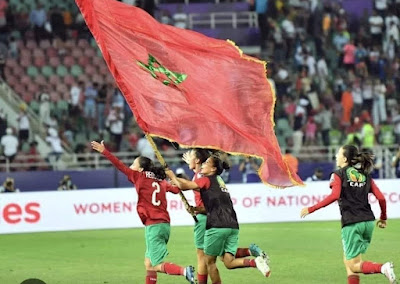 |
| Moroccan national team |
The
history of women's football (also known as soccer in some countries) dates back
to the late 19th century. Like many other sports, women's involvement in
football faced significant challenges and discrimination, but it has since
grown to become one of the most popular female team sports globally. Here's an
overview of the key milestones in the history of women's football:
Early
Beginnings: The first recorded women's football match took place in Scotland in
1881. However, the sport faced opposition, and in 1921, the Football
Association (FA) in England banned women from playing football on FA-affiliated
fields until 1971.
Flourishing
in Difficult Times: Despite the ban, women's football continued to grow,
especially during the First and Second World Wars. The war efforts provided
opportunities for women to step into roles previously occupied by men,
including playing football to raise morale and funds.
Decline
and Revival: After the Second World War, women's football experienced a
decline, with many leagues disbanding. In the 1960s and 1970s, the sport saw a
resurgence, particularly in Europe and North America, driven by grassroots
efforts and growing interest in women's rights and gender equality.
International
Recognition: In 1970, the first unofficial Women's World Cup was organized in
Italy, setting the stage for increased international competition. The success
of this event eventually led to the creation of the official FIFA Women's World
Cup, which held its inaugural edition in 1991 in China.
Formation
of Governing Bodies: In 1971, the FA in England finally lifted its ban on
women's football, leading to increased support and recognition for the women's
game. Other countries followed suit, establishing governing bodies to oversee
women's football.
Professionalization:
As interest in women's football grew, some countries began to establish
professional leagues. The United States saw significant progress in this area,
with the formation of the Women's United Soccer Association (WUSA) in 2001 and,
later, the National Women's Soccer League (NWSL) in 2013.
Olympic
Inclusion: Women's football made its Olympic debut at the 1996 Atlanta Games.
Since then, it has been a regular part of the Olympic program, contributing to
the sport's global growth and visibility.
Advancements
in Skill and Tactics: As women's football evolved, players and teams
demonstrated exceptional skills and tactics, captivating audiences worldwide.
Several players have become iconic figures, raising the sport's profile and
inspiring future generations.
Closing
Gender Gap: While women's football has made significant strides, challenges
still remain, such as pay equity, media coverage, and investment. Advocates and
players continue to push for further progress and the closing of the gender gap
in football.
Overall,
the history of women's football is a testament to the determination and
resilience of female athletes who fought for recognition and opportunities,
paving the way for the sport's growth and success in the modern era.
